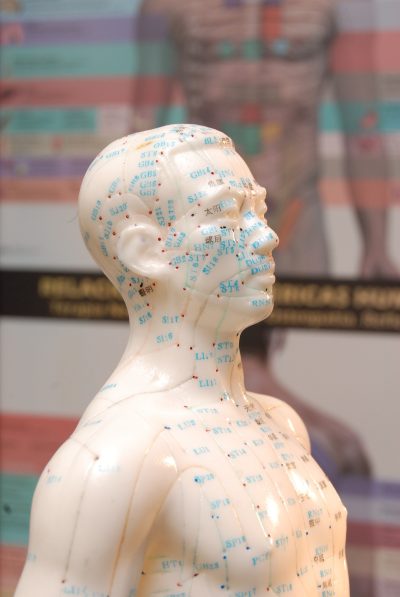Acupuncture and dry needling are both hot topics in the media at the moment. But what is acupuncture, what is dry needling and how do they differ?
In this blog we will discuss the similarities, differences and shed some light on which therapy may be more suited to your needs. Acupuncture and dry needling share some similarities as both therapies aim to provide pain relief by inserting fine needles into specific areas of the body.
However the origins and principles of acupuncture and dry needling differ significantly.

Acupuncture is a traditional form of Chinese medicine that can be traced back thousands of years and subscribes to the philosophy that there are meridians or channels that run throughout the human body.
According to acupuncture principles, dysfunction in the body can occur if the Qi (pronounced Chi) or flow of blood is obstructed along the meridian lines. By inserting needles into specific parts of the body, acupuncture therapy can help to remove obstructions and restore the normal flow and balance within the body.
In comparison to acupuncture, dry needling is a modern Western medicine treatment that is based on neuroanatomy. It aims to relieve muscle pain by inserting needles into ‘trigger points’ in muscles or tissue.

Acupuncture therapy involves inserting acupuncture needles in specific points along meridian lines based on the particular condition that the patient presents with. Acupuncture aims to restore the body back to a harmonious state, relieve pain and maximise health and well-being.
Dry needling focuses on inserting needles directly into trigger points or areas of knotted or hard muscle. Dry needling aims to relieve pain and improve mobility and release muscle tightness and tension.
Acupuncture can be incorporated into treatments for patients who are managing health conditions such as:
Dry Needling mainly focuses on treating musculoskeletal pain and issues such as muscle tightness.

In Australia, Acupuncture practitioners are regulated by AHPRA (Australian Health Practitioner Regulation Agency).
Currently there are no regulations in place for dry needling in Australia. Some practitioners may receive training but the quality and length of their training cannot be verified.
The choice between Acupuncture and Dry Needling may come down to individual preference or the specific condition that you may be looking to treat.
Acupuncture can treat a wide variety of conditions and can be a great complementary treatment alongside western medicine therapies.